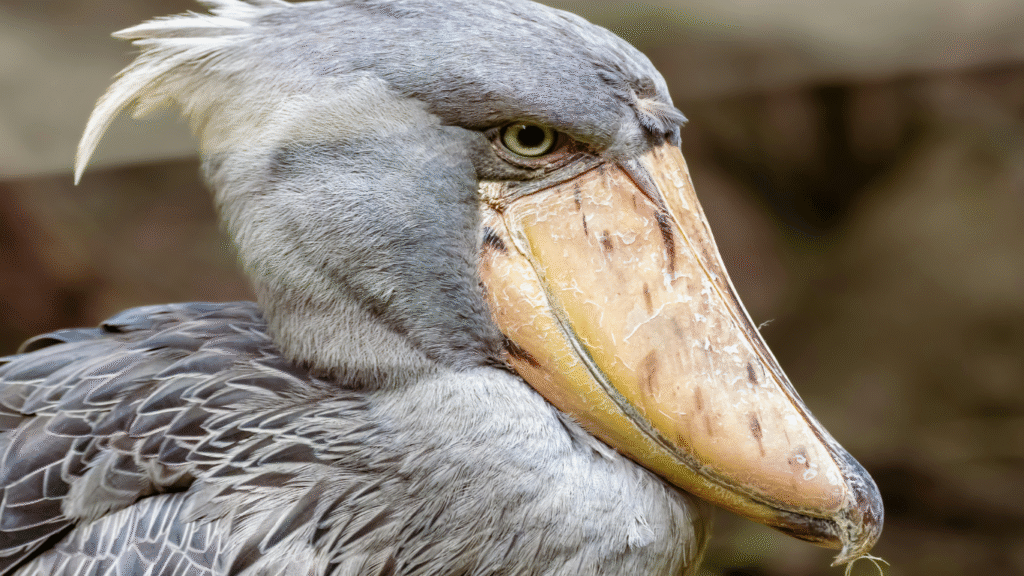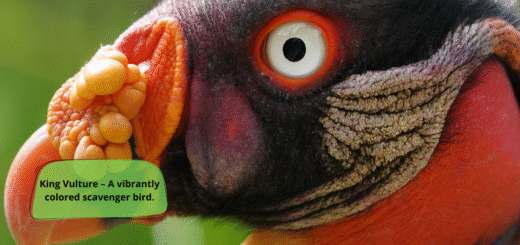The Shoebill: A Majestic Bird with a Unique Charm
The Shoebill (Balaeniceps Rex) is one of the most intriguing and unique bird species in the world. Known for its large, shoe-shaped bill, this bird captures the imagination of wildlife enthusiasts, bird watchers, and nature lovers alike. Despite its intimidating appearance, the Shoebill is a fascinating creature with a majestic presence. In this article, we will explore the fascinating characteristics, habitat, behavior, and conservation status of the Shoebill.

What is a Shoebill?
The Shoebill is a large, non-migratory bird that is native to the swamps and wetlands of central tropical Africa. It is also sometimes referred to as the “Balaeniceps” or “Whale-headed Stork” due to the unique shape of its bill, which resembles the shape of a shoe or a boat. The Shoebill’s bill is one of its most notable features, measuring up to 9.4 inches (24 cm) in length, making it not only visually striking but also an effective hunting tool for catching prey.
Physical Characteristics of the Shoebill
- Size: Shoebills are large birds, standing up to 5 feet (1.5 meters) tall with a wingspan of around 7.5 to 8.2 feet (2.3 to 2.5 meters).
- Bill: The most defining characteristic of the Shoebill is its large, shoe-shaped bill, which is broad at the base and tapers to a pointed end. The bill helps the bird catch fish, amphibians, and even small reptiles.
- Plumage: The Shoebill has striking grey feathers with a slightly blueish hue. Its long, stout legs and large, powerful feet give it a somewhat prehistoric look.
- Eyes: The Shoebill’s eyes are large and bright yellow, adding to its commanding presence.
Habitat of the Shoebill
Shoebills are primarily found in the swamps, wetlands, and dense marshlands of central tropical Africa. They are most commonly seen in countries like Uganda, South Sudan, Sudan, and Zambia. These birds prefer shallow, slow-moving waters with dense vegetation, where they can find an abundance of fish and other aquatic prey. The Shoebill is well adapted to its swampy environment, often standing motionless for long periods while waiting for its next meal.
Diet and Hunting Techniques
Shoebills are carnivorous birds that rely on a diet of fish, amphibians, and small reptiles. They are skilled hunters and can strike with incredible precision. Their bill is perfect for catching fish, such as lungfish, tilapia, and catfish, but they are also known to hunt smaller animals like snakes, frogs, and baby crocodiles.
The Shoebill uses a unique hunting technique called the “stand and wait” method, where it stands motionless for extended periods, waiting for prey to come within striking distance. When a fish or amphibian approaches, the Shoebill strikes with lightning-fast speed, using its powerful bill to grab and immobilize its prey.
Behavior and Mating
Despite its large size and intimidating appearance, the Shoebill is relatively solitary. These birds are known to be territorial, and pairs typically establish breeding territories during the mating season. Shoebills are monogamous and often stay with the same mate for life.
During the breeding season, the Shoebill constructs a large nest made of reeds and sticks in the middle of a swamp. The female lays one or two eggs, and both parents take turns incubating the eggs. Once the chicks hatch, they are cared for by both parents, with the father providing food and the mother protecting the nest.
Conservation Status
The Shoebill is classified as Vulnerable on the International Union for Conservation of Nature (IUCN) Red List due to habitat loss and human interference. Wetland destruction, hunting, and disturbance from human activities have contributed to a decline in the Shoebill population. The bird’s habitat is being encroached upon by agricultural development, logging, and the draining of wetlands for human use.
There are estimated to be fewer than 5,000 Shoebills remaining in the wild, making conservation efforts crucial for the survival of this remarkable bird species. Protecting wetland habitats and raising awareness about the importance of conserving these ecosystems are essential steps in ensuring the future of the Shoebill.
Fascinating Facts About the Shoebill
- Silent Hunters: The Shoebill is known for its silent and patient hunting style. It stands still for long periods, allowing prey to come close before striking.
- Strong Bill: The Shoebill’s bill is incredibly strong and can deliver a powerful blow to catch and kill prey. It’s capable of crushing fish bones and snapping small reptiles in half.
- Rare Sight: Due to their elusive nature and remote habitats, seeing a Shoebill in the wild is considered a rare and exciting experience for bird watchers.
- Prehistoric Appearance: The Shoebill’s large, robust bill and overall body structure make it look like a bird from the age of dinosaurs, earning it the nickname “living fossil.”
Conclusion
The Shoebill is undoubtedly one of the most fascinating birds in the world. With its unique physical features, impressive hunting skills, and elusive nature, it has captured the curiosity of bird lovers worldwide. However, this incredible species faces numerous threats, and its conservation status highlights the need for concerted efforts to protect its fragile habitat. By raising awareness and supporting conservation efforts, we can ensure that future generations will continue to marvel at the Shoebill’s beauty and mystery.








